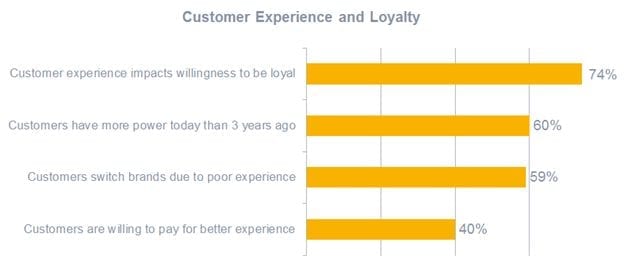Alexander Vaneck is back today with Part 2 of his No BS Guide to Marketing. He’s going to get into more detail with Customer Lifecycle Marketing and how to find and retain customers. Take it away Alexander!
My last post about Customer Lifecycle Marketing got a fair bit of attention. Some have requested I should write more. Thank you for the feedback! I have decided to write six smaller articles. Each outlining a different stage of the Customer Lifecycle.
This post is on how to create Personas, or Customer Archetypes. To me, it’s a pre-requisite to any successful marketing strategy.
Let’s get stuck in! It’ll take about five minutes to read.
Personas And Customer Archetypes
By making an outline of your ideal customer, your efforts become more focused. That’s the goal of creating a Persona, also called a Customer Archetype.
Before we get into what personas are and how you can create one, I’d like to go over what personas are not.
Personas are not:
- A perfect description of every customer.
- The ultimate guideline to every interaction with a customer.
- A guaranteed way of finding new customers.
- A guaranteed way of improving your business.
You should never be looking at your personas as the ultimate solution to all your problems. Think of them as a guideline.
A persona can be a great way to visualize your ideal customers. They are nothing more than that, a visualisation.
Note: It’s also possible that your ideal customer is simple. For example when you sell HVAC repair services, your ideal customer will have a broken air conditioner. Attributes like age or habits might not matter to you.
Yet demographics could tell you enough about how/where to advertise. And how you should treat elderly customers versus young families.
The Benefit Of A Persona
I can hear you thinking, “If they’re not perfect, why would I use one?”
The goal of personas is to get an understanding of who your customers are. They are not designed to reflect your customers completely.
Instead, they find common denominators. And make it easy to imagine who you’re interacting with.
What You Are Looking For
In creating any persona, you are trying to find the answer to three questions:
- What is your customer trying to get done?
- What gains can we create for the customer?
- What pains can we solve for the customer?
These will give you insight into what your customer wants and needs are. And make it easy to come up with solutions. Any persona you create should answer these three basic questions.
The Process
We all have certain ideas about who our ideal customers are. I can guarantee that your initial preconceptions are going to be wrong.
When I create personas, I start with a first draft of what I think the persona should be.
For example:
Rich asians who want to move to London
- Age: 30-45.
- Are moving abroad for business.
- Want to live in the city centre.
- Don’t have time to sort out visas.
Then I go out and talk to actual customers that fit my persona!
It’s vital that you base your personas on reality and test if your guesses are close to the truth. If you don’t have any customers yet, talk to people who you think might become customers.
To have enough data to create an accurate persona, you should find between 5 and 30 participants. The exact number isn’t important, as long as patterns emerge.
If you’re like me, you’ll find your initial guesses are wrong. Now you can make your personas better.
An Interview Template
Templates are great. You can fill ’em out and that’s a job done. The first time I made a persona I thought that it was necessary to fill all the questions. I soon got tired of conducting long interviews.
My advice to you is to use a template. But ask yourself with each question what you can learn from it. And if it gives you insight into the three questions written above.
If it is useful to know about your customer, include it. If it isn’t, don’t ask.
The questions below should give you enough inspiration to create your own template:
Section 1: Who?
Background
Job
- What is your job role? Your job title?
- How is your job measured?
- What is a typical day?
- What skills do you need?
- What knowledge and tools do you use?
- Who do you report to? Who reports to you?
Company
- What industry or industries does your company work in?
- What is the size of your company (revenue, employees?)
Demographic
- Age.
- Male or Female.
- Family (single, married, children).
- Education.
- Income.
- Location (city, suburb, rural).
- Hobbies.
Identifiers
- Demeanor?
- Communications preferences?
Habits
- How do you learn about new information for your job?
- What publications or blogs do you read?
- What associations and social networks do you belong to?
Section 2: What?
Goals
- What is your primary goal?
- What are you responsible for?
- What does it mean to be successful in your role?
- How do you achieve those goals?
- How is your office organized to help you complete your tasks or goals?
Challenges
- What are your biggest challenges?
- How do you overcome these challenges?
- After a typical workday, what about your job is still on your mind? (In other words, what issues keep you up at night?)
- How do you research products or services you use?
- What do you look for in products or services? What do you expect?
What Can We Do For You?
- If you could build your ideal experience, what would it be?
- What can we do to help achieve their goals?
- What can we do to overcome their challenges?
- How do you expect to use our product/service?
Section 3: Why?
Real Quotes
- Memorable quotes
- Common Objections
- Why wouldn’t you buy from us?
Section 4: How?
Complete this section after you’ve conducted the interview. It uses what you have learned. The Customer Pains, Gains and Need/Problem.
Marketing Messaging
- How should we present our product/service to this persona?
Elevator Pitch
- Sell your persona on your solution in 1 sentence.
Analyse
Now that you have your data, put everything you wrote down on a table. And go through each one. You’re looking for similarities between the different interviews.
Let’s say you’ve interviewed hospital staff. An attribute they might share is interaction with clients. When you have identified this attribute, you can create a scale.
Hospital staff either have:
- Lots of client contact.
- Regular client contact.
- Some client contact.
- Little client contact.
Map each interviewee onto this scale. Do this for at least 5 to 15 attributes.
Next, you’re going to look at which interviewees have overlapping attributes. This is why it is important that your scales have four levels.
With three or five levels interviewees are going to get mapped into the middle slot. You want to force distinct overlap with four levels.
You’ll notice that some interviewees often overlap. This is a sign that they are one persona. Write down the attributes that you expect from this group. And look up other data points (age, demographics, etc).
Make sure you have written down what their Pains, Gains and Problem/Need is.
Do this until every interviewee has a persona. It is ok if one or two interviewees don’t overlap with anybody. This could be a sign that your target audience is changing. But there’s also a good chance that they don’t fit your product/service.
https://youtube.com/watch?v=1ZzCSyT6wo0
Naming Your Persona
Now that you’re done, name the personas. It doesn’t have to be fancy, Marketing Mark or Soccermom Suzy is fine. This makes it easier to refer to them when talking to co-workers. To really sell this idea, find a stockphoto for your persona.
As a finishing touch you should create a document with all their traits and attributes. I suggest to print your different personas and hang them in your office.
Every time you create a customer interaction think about these personas. What would Handy Harry think of this?
That’s it. Nothing more to it. Easy right?
Make sure to refresh your personas every 6 months. And stay on top of changes in your target customer segment.
This is incredibly important, as customer experience and loyalty should be key to everything you do. It’s important because a recent study by Oracle found that “74% of senior executives believe that customer experience impacts the willingness of a customer to be a loyal advocate,” as this chart from SuperOffice shows:
The next article will be about how to Reach customers. You can expect it sometime next week.
I hope you’ve found this guide to marketing very useful for your video business. Some of the examples here aren’t video production based, but the examples that Alexander has given wok for all types of industries, including video businesses.
Thoughts, ideas, questions? Let us know in the comments section below. Thanks!
Resources
How to create personas – Hubspot
Beginners guide to personas – Buffer
Persona templates – Hubspot
A closer look at personas – Smashing Magazine
Person Stockphotos – UIFaces
Udacity Course, Business Model Canvas – Steve Blank
The Innovators’s Dilemma – Clayton Christensen
Matt Crawford
Related posts
1 Comment
Leave a Reply Cancel reply
This site uses Akismet to reduce spam. Learn how your comment data is processed.







Are demographics that important? I see a lot of people talking about them, but it always seems like mental masturbation to me to focus on too much detail like that.